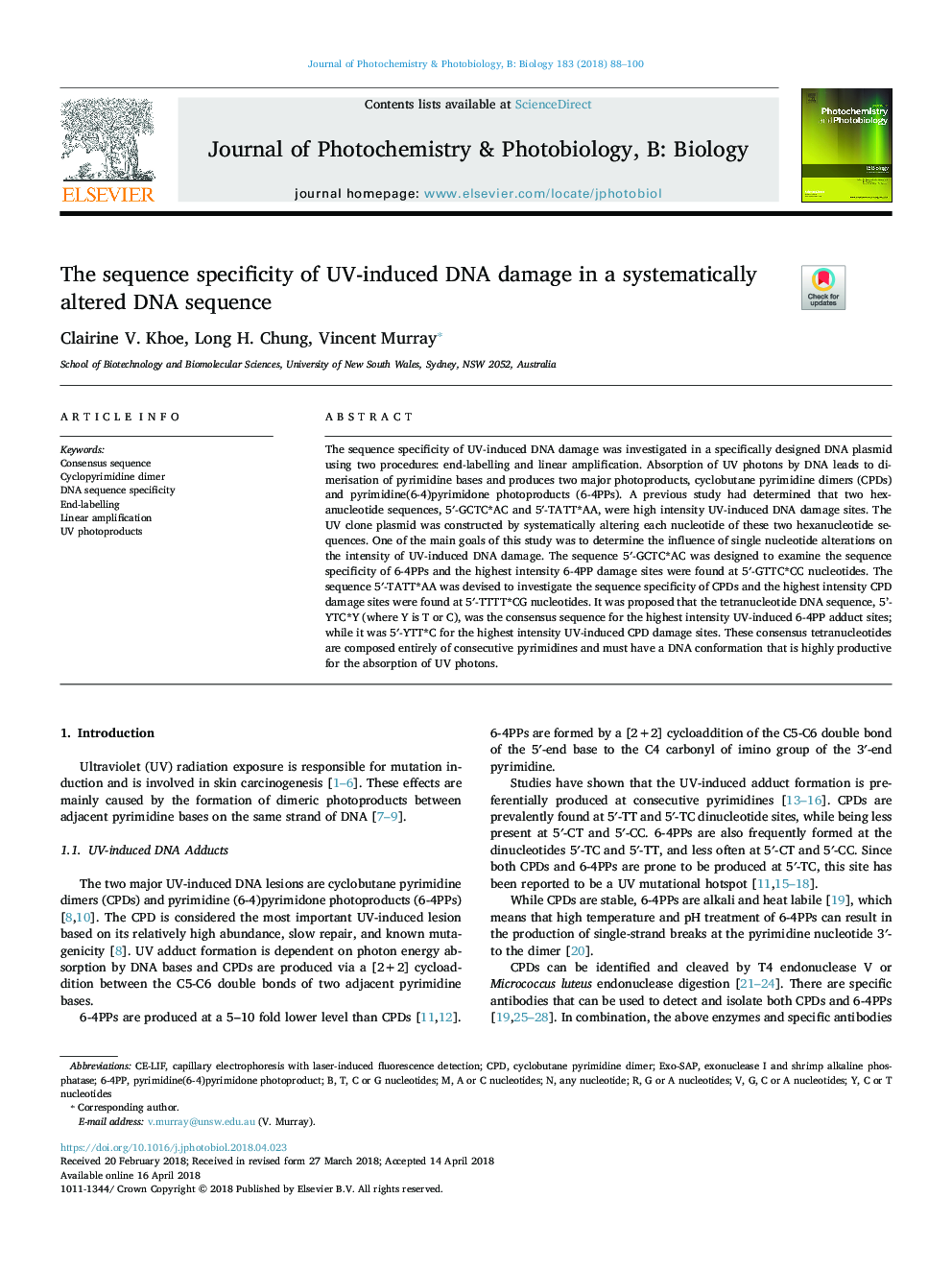| Article ID | Journal | Published Year | Pages | File Type |
|---|---|---|---|---|
| 6493261 | Journal of Photochemistry and Photobiology B: Biology | 2018 | 13 Pages |
Abstract
The sequence specificity of UV-induced DNA damage was investigated in a specifically designed DNA plasmid using two procedures: end-labelling and linear amplification. Absorption of UV photons by DNA leads to dimerisation of pyrimidine bases and produces two major photoproducts, cyclobutane pyrimidine dimers (CPDs) and pyrimidine(6-4)pyrimidone photoproducts (6-4PPs). A previous study had determined that two hexanucleotide sequences, 5â²-GCTC*AC and 5â²-TATT*AA, were high intensity UV-induced DNA damage sites. The UV clone plasmid was constructed by systematically altering each nucleotide of these two hexanucleotide sequences. One of the main goals of this study was to determine the influence of single nucleotide alterations on the intensity of UV-induced DNA damage. The sequence 5â²-GCTC*AC was designed to examine the sequence specificity of 6-4PPs and the highest intensity 6-4PP damage sites were found at 5â²-GTTC*CC nucleotides. The sequence 5â²-TATT*AA was devised to investigate the sequence specificity of CPDs and the highest intensity CPD damage sites were found at 5â²-TTTT*CG nucleotides. It was proposed that the tetranucleotide DNA sequence, 5'-YTC*Y (where Y is T or C), was the consensus sequence for the highest intensity UV-induced 6-4PP adduct sites; while it was 5â²-YTT*C for the highest intensity UV-induced CPD damage sites. These consensus tetranucleotides are composed entirely of consecutive pyrimidines and must have a DNA conformation that is highly productive for the absorption of UV photons.
Keywords
Related Topics
Physical Sciences and Engineering
Chemical Engineering
Bioengineering
Authors
Clairine V. Khoe, Long H. Chung, Vincent Murray,
